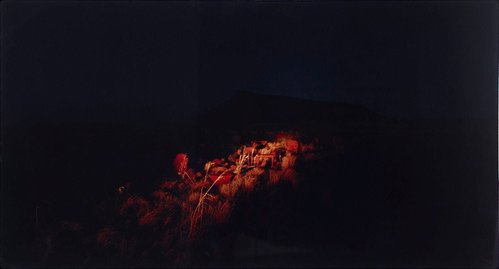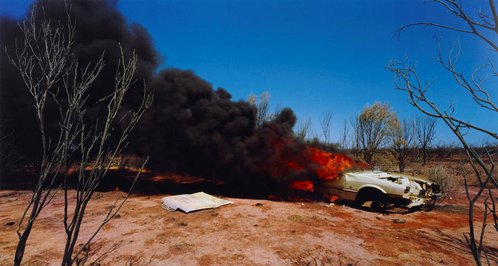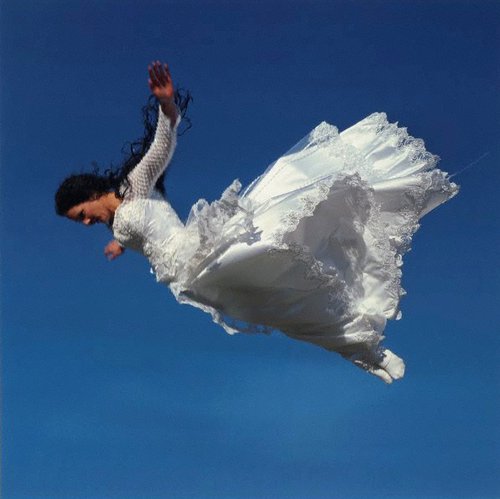Title
a dozen useless actions for grieving blondes #10, from the series a dozen useless actions for grieving blondes
2009
Artist
-
Details
- Date
- 2009
- Media category
- Photograph
- Materials used
- type C photograph
- Edition
- 1/8
- Dimensions
- 77.5 x 133.5 cm image; 80.0 x 136.5 cm frame
- Signature & date
Signed and dated l.l.c. verso frame, black ink "Rosemary Laing/.../ 1/8/2009".
- Credit
- Purchased with funds provided by the Art Gallery Society of New South Wales, the Ruth Komon Bequest in memory of Rudy Komon and the Photography Collection Benefactors' Program 2009
- Location
- Not on display
- Accession number
- 327.2009.1
- Copyright
- © Rosemary Laing
- Artist information
-
Rosemary Laing
Works in the collection
- Share
-
-
About
Sydney-based photo-media artist Rosemary Laing is best known for her large-scale cinematic images in which she tackles genres (particularly landscape) head-on, deconstructing visual and conceptual codes while reconfiguring and reflecting back the elements at play. Her interest in the intersections between the natural and the artificial, the real and the constructed, is a continuous thread that runs across her practice – enacted photographically through staged interactions with environments and bodies. Akin to a film director she carefully choreographs her images and as a result her spectacular photographs often possess a film-still quality and sense of performance.
In her latest series, ‘a dozen useless actions for grieving blondes’, the face, the most concentrated site of human gesture, becomes (for the first time in her work) the terrain of Laing’s navigation and renegotiation. The artist presents the portraits of a number of women, each a little larger than life and each in the grip of some untold devastation. The highly dramatic nature of these expressions, contained and condensed under studio lighting, uniformity of the pink background, recurring head and shoulder bust format, and the superficial similarities of the ‘blondes’, initially compromises our ability to perceive the women as individuals. On first glance they, like the background, almost blur into one - suggesting the stream of formulated images.
Laing purposefully references the conventions of beauty and while we aren’t told the direct cause of anguish in these images the ignominy of the stereotype is strongly implicated. Ultimately it is the marked and the subtle differences between each woman and their expressions, the fragility and uniqueness of their bare and lived-in skin that defines them as individuals. It is the tense oscillation between raw reality and superficiality that makes these images continually compelling and enigmatic.
As Tanya Peterson notes, ‘There is no apparent context for this grief, no signs of causality, only transient affects in search of decisive moments. If the images suggest a past, it is perhaps one connected more to a history of images, of media, than a history of individual subjects.’ And ‘... the consolation of beauty is built on the ruins of idealism.’ (Art World April/May 2009)
-
Exhibition history
Shown in 1 exhibition
Loud!, Art Gallery of New South Wales, Sydney, 25 Apr 2015–05 Jul 2015
-
Bibliography
Referenced in 3 publications
-
Tanya Peterson, Art World (issue 8), ‘Rosemary Laing: dead loss’, pg.84-86, Sydney, Apr 2009-May 2009, 84-86.
-
Isobel Parker Philip, Look, 'Extremely loud and incredibly close', pg.24-26, Sydney, Apr 2015, 26 (colour illus.).
-
Jill Sykes (Editor), Look, 'Members' gallery: the next decade', pg.22-30, Sydney, Jul 2013, 27-8.
-




